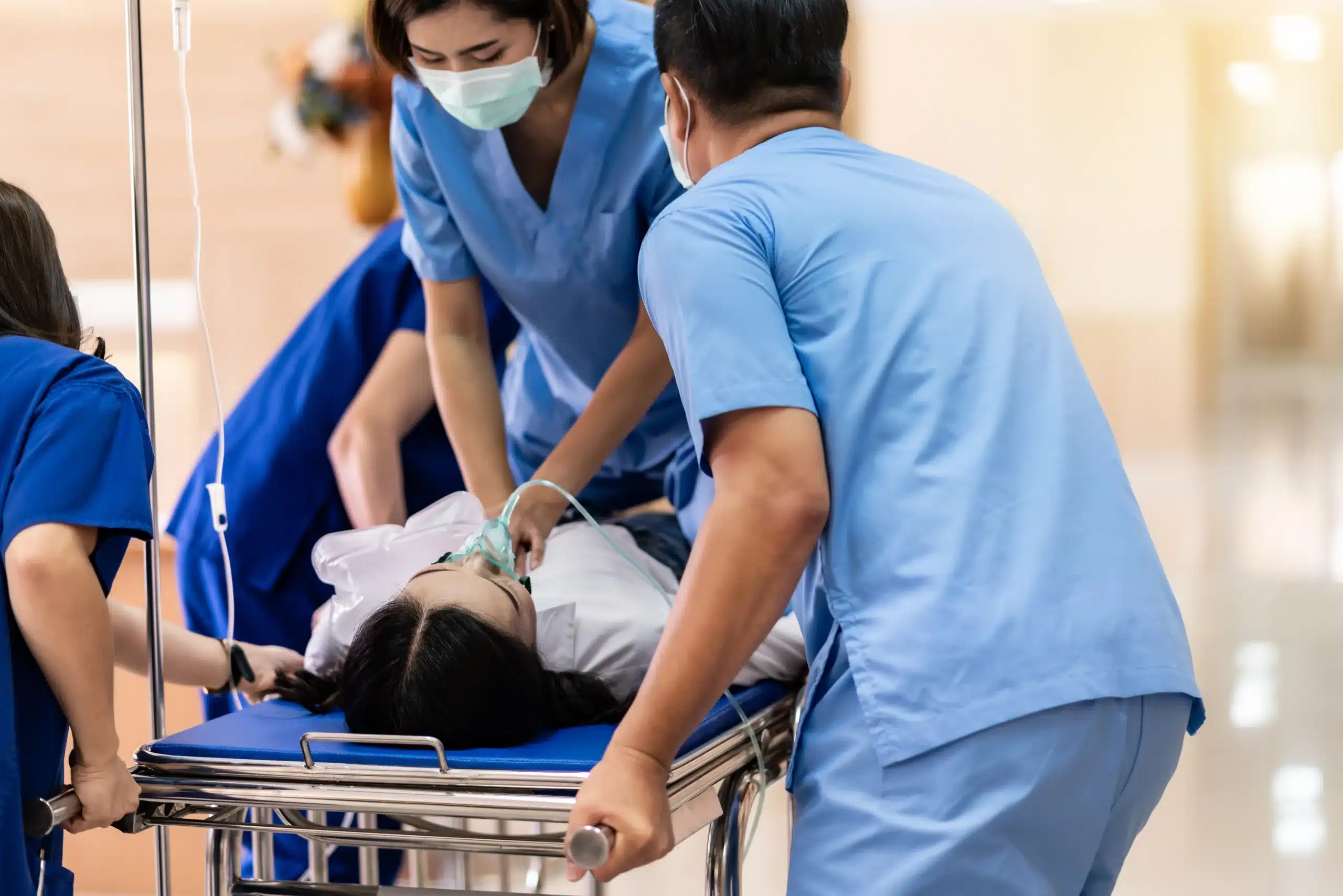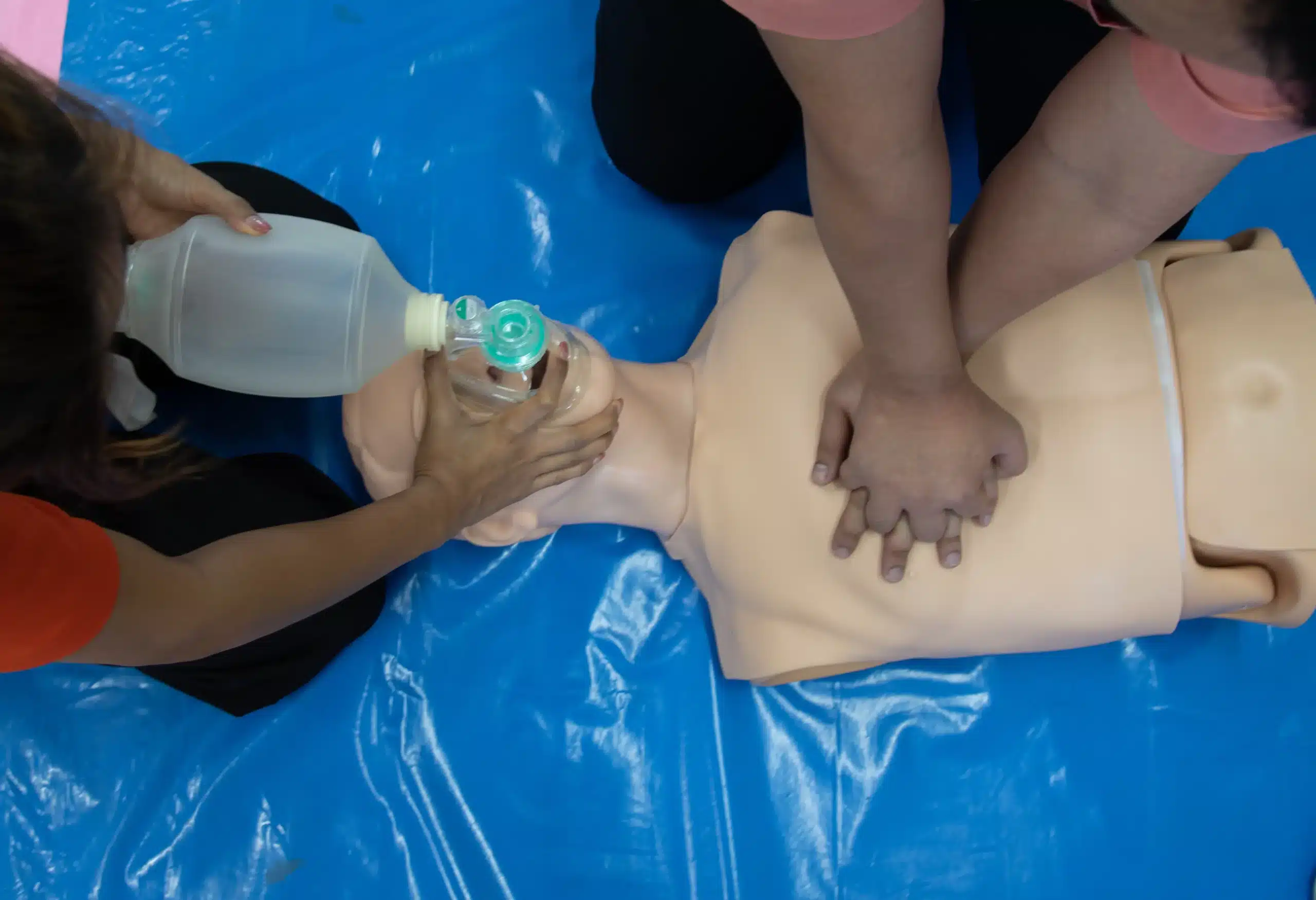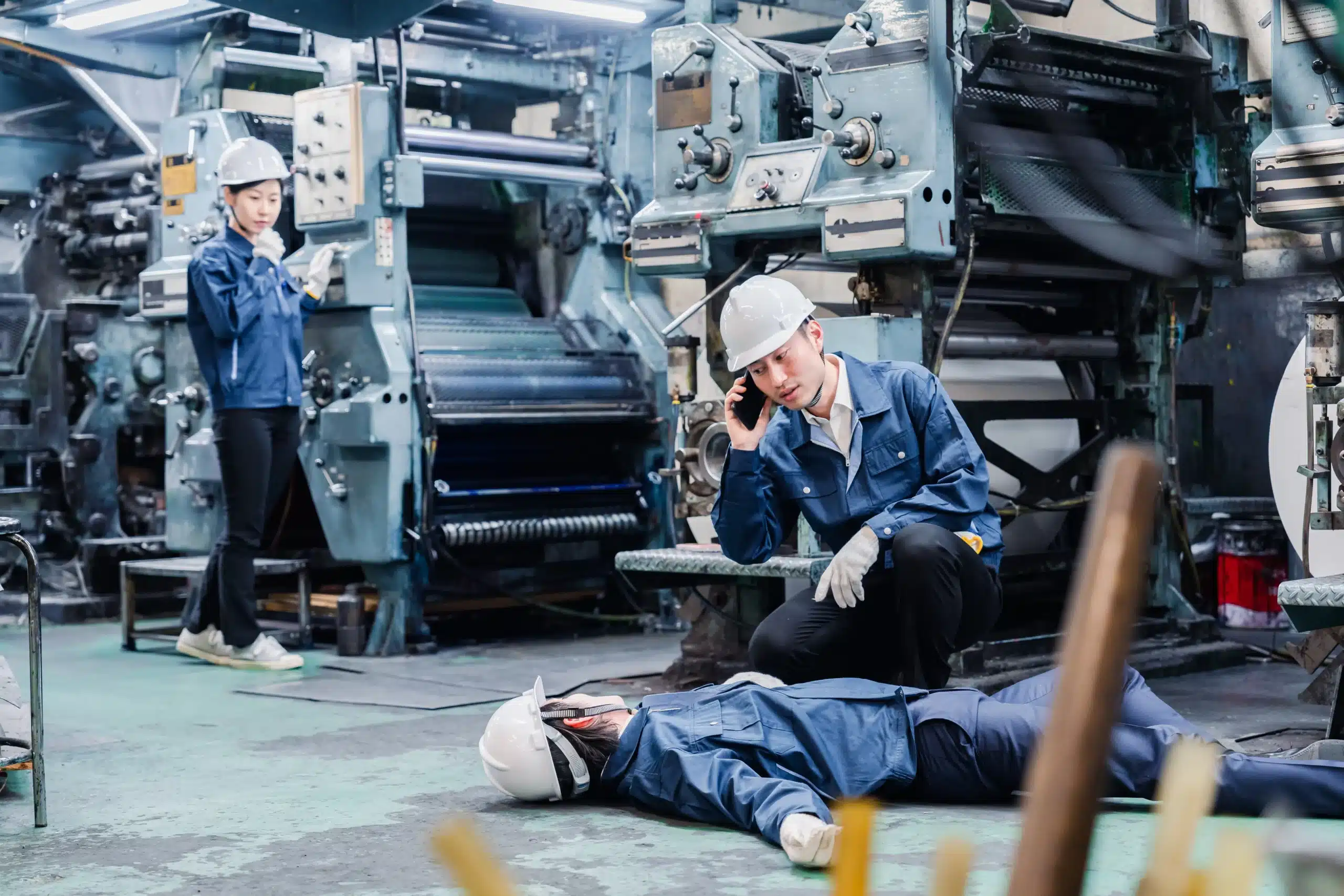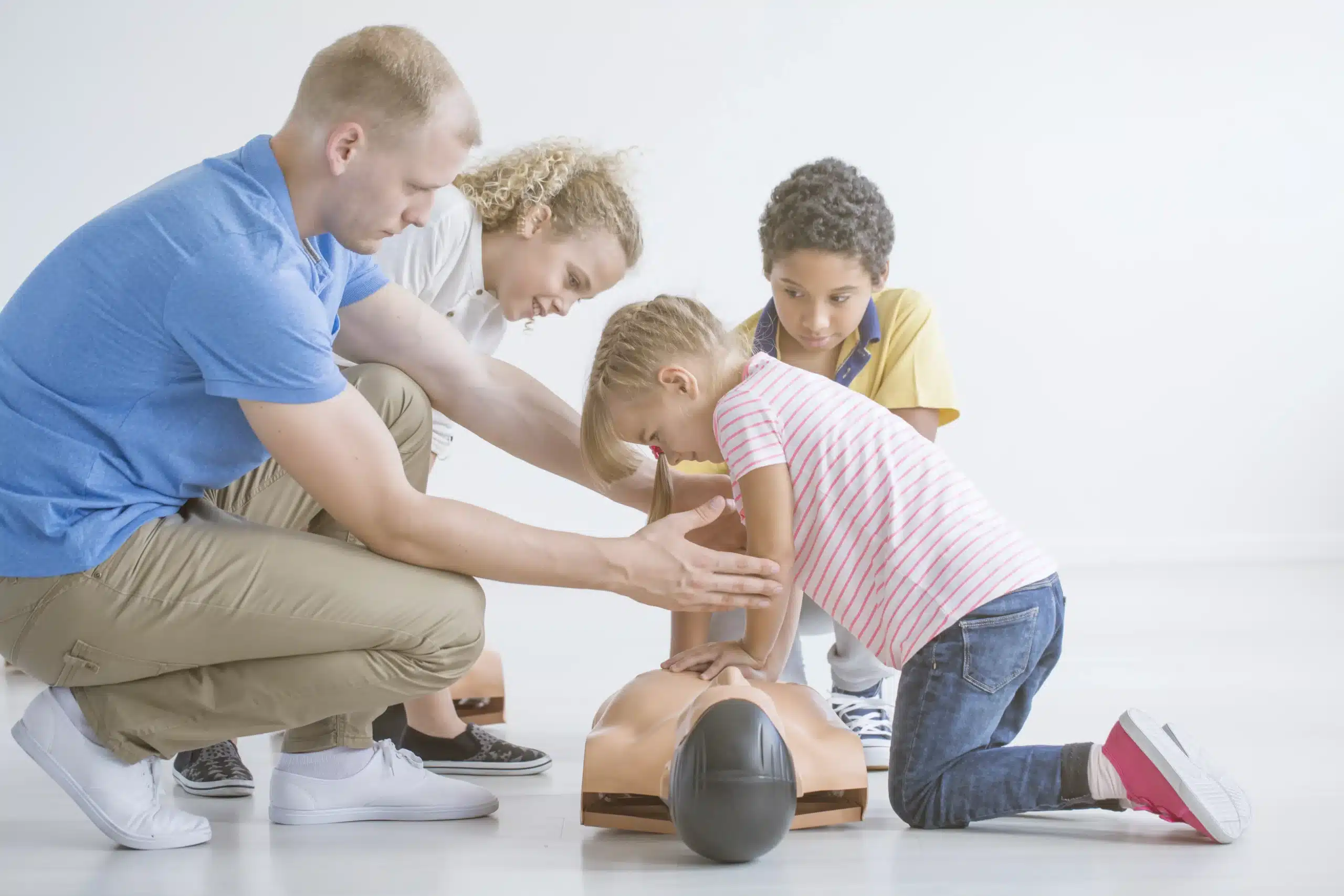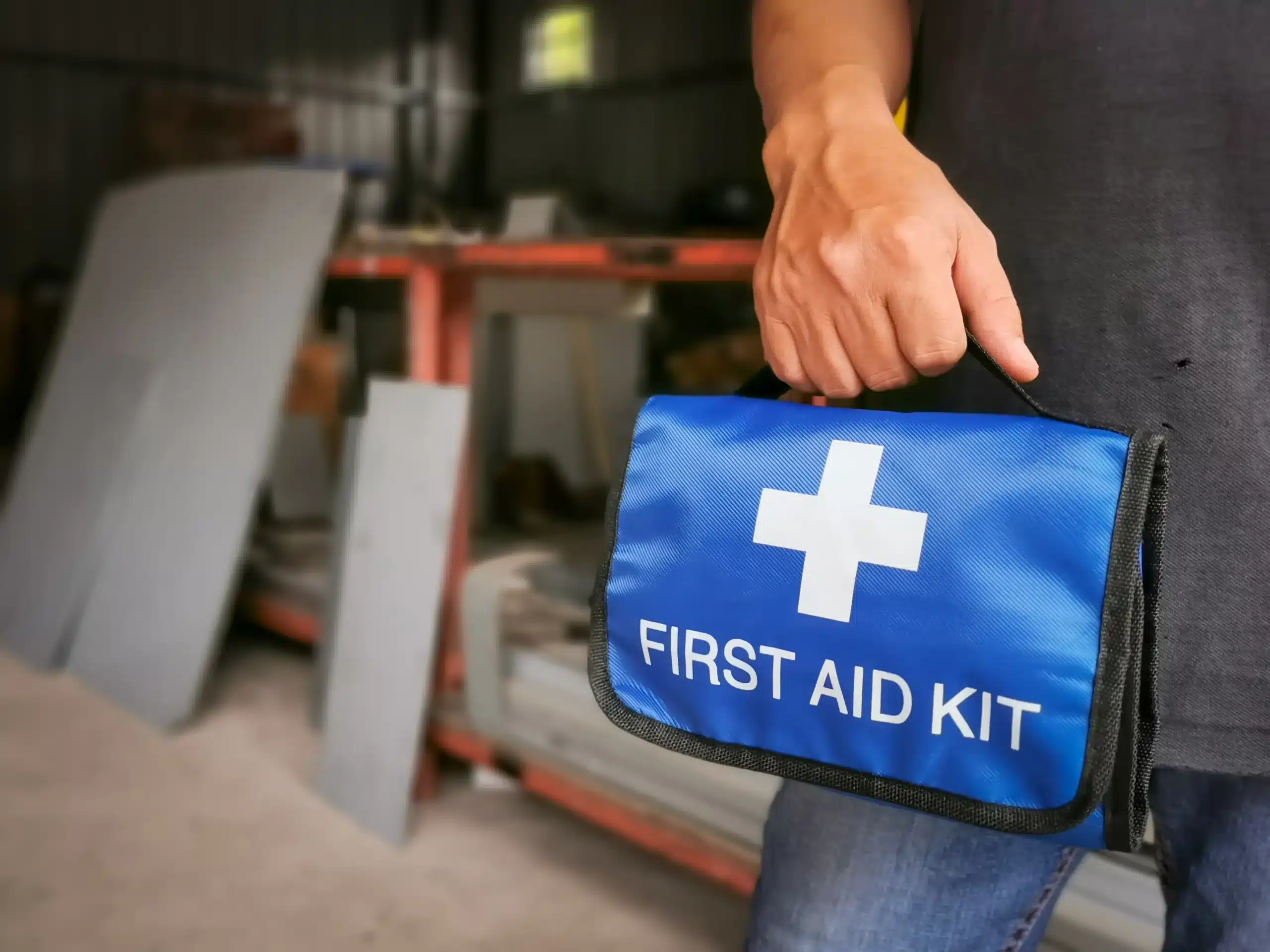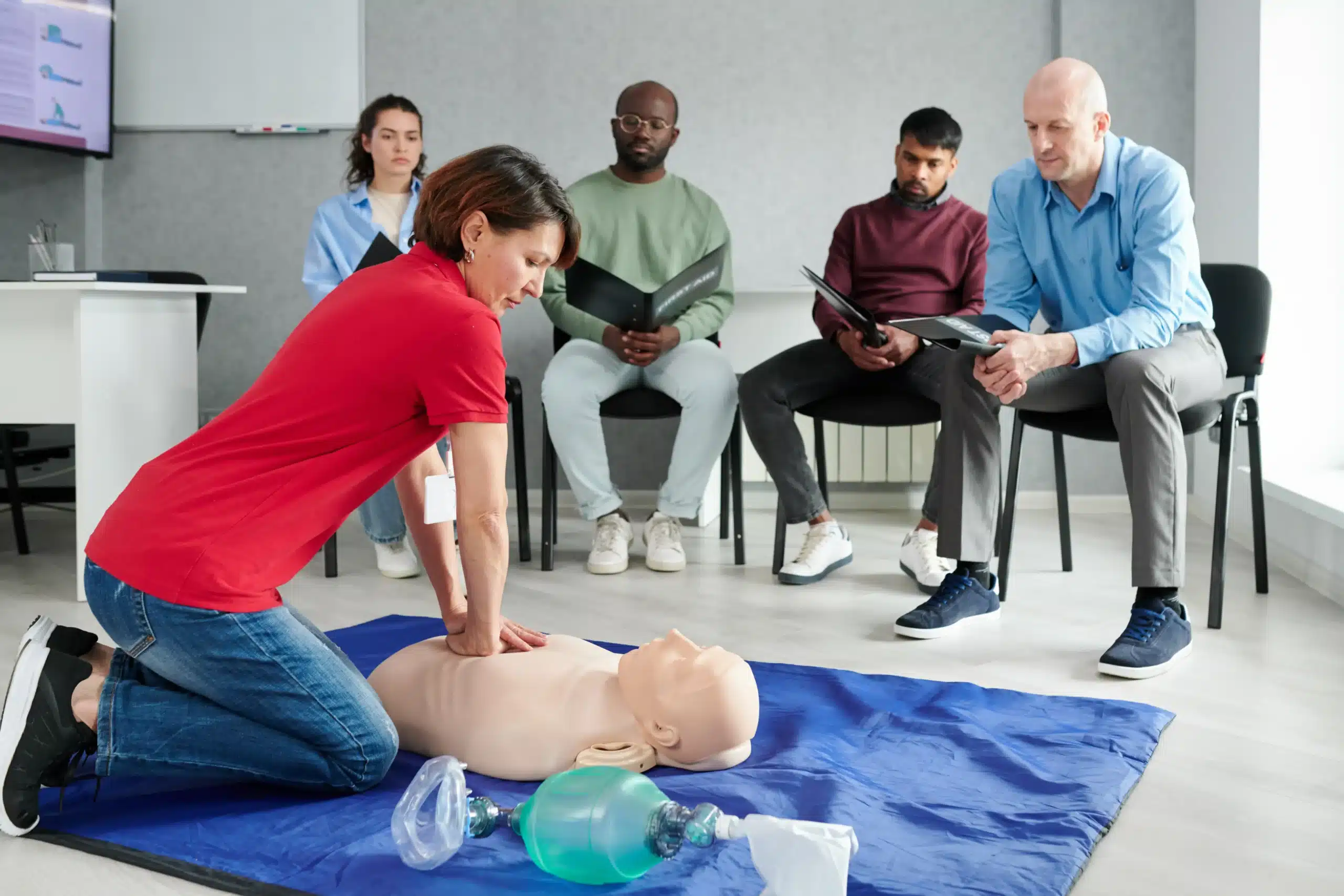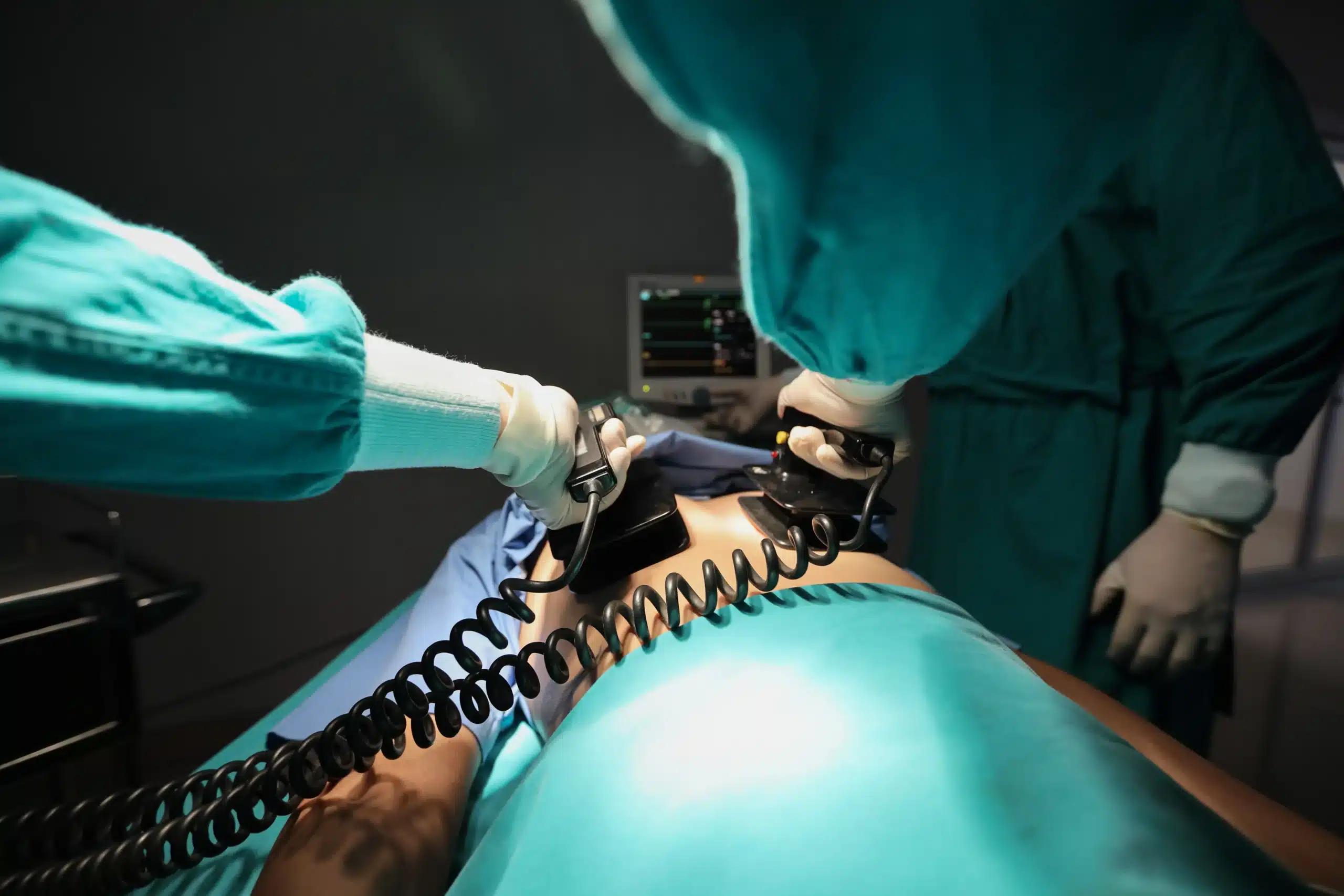Balancing work, family, and other commitments can make it tough to find time for essential training like BLS. Fortunately, online BLS courses in Sunnyvale offer a flexible solution, allowing you to learn life-saving skills at your own pace. But with so many options available, how do you choose the right course? This comprehensive guide explores the world of online BLS training in Sunnyvale, covering everything from the basics of BLS certification to the pros and cons of online learning. We’ll also delve into the costs, scheduling, and top providers in the area, helping you make an informed decision and embark on your journey to becoming a certified lifesaver.
Key Takeaways
- BLS certification is a valuable skill for everyone, especially those in healthcare. It equips you with the knowledge and skills to respond confidently during medical emergencies. Consider online or in-person training based on your learning preferences.
- Online BLS courses offer flexibility, but hands-on practice is crucial for AHA certification. Prepare for the in-person skills assessment by practicing CPR techniques at home. This will build your confidence and proficiency.
- Choose a reputable training provider like Safety Training Seminars for your BLS certification. Look for AHA-certified courses, transparent pricing, and convenient class schedules. Consider factors like instructor support and additional resources when making your decision.
What is BLS Training?
BLS (Basic Life Support) training teaches you how to respond to life-threatening emergencies. It’s the foundation for saving lives, providing crucial care until professional medical help arrives. Think of BLS as the first line of defense, offering immediate support to those in need. BLS focuses on providing oxygen and blood circulation to vital organs, increasing the chances of survival. CPR training in Sunnyvale plays a vital role in preparing individuals for these critical situations.
Key BLS Components
A BLS course covers essential life-saving techniques. You’ll learn adult, child, and infant CPR, including chest compressions and rescue breaths. The training also includes two-person CPR, coordinating efforts during resuscitation. You’ll learn how to use an AED (automated external defibrillator), a device that can restore a normal heart rhythm. Finally, you’ll learn bag-valve mask techniques for providing assisted ventilation. BLS CPR classes in Sunnyvale cover all these components, preparing you for various emergency scenarios. The AHA BLS Certification process involves online coursework and an in-person skills assessment.
Who Needs BLS Certification?
BLS certification is valuable for a wide range of people. Healthcare professionals, like doctors and nurses, rely on BLS skills daily. First responders, including firefighters and police officers, also benefit from this training. Beyond these professions, BLS certification is helpful for teachers, coaches, parents, caregivers—anyone who wants to be prepared for emergencies. BLS training equips individuals to respond effectively in critical situations, making it useful in various professional and personal settings. The AHA certification is valid nationwide.
Online vs. In-Person BLS: Pros and Cons
Choosing between online and in-person BLS training is a personal decision. Both options offer the same certification, but the learning experience differs. Let’s weigh the pros and cons of each to help you decide which format best suits your needs and learning style.
Online Learning: Flexibility and Accessibility
Online BLS courses offer unparalleled flexibility. You can study at your own pace, fitting the training around your busy schedule. This works well for those juggling work, family, or other commitments. All you need is internet access and a computer, tablet, or smartphone. This accessibility makes online learning a convenient option, especially for those in remote areas or with limited transportation. The online portion of a BLS course allows you to study anytime, anywhere, making it easier to fit BLS training into your life.
Hands-On Practice: Why It Matters
While online learning offers flexibility, hands-on practice is crucial for mastering BLS skills. The American Heart Association (AHA) BLS certification requires both an online component and an in-person skills assessment. This blended approach ensures you grasp the concepts and can perform them correctly under pressure. In-person skills sessions provide immediate feedback from instructors, allowing you to refine your technique and ask questions in real-time. Experienced instructors can offer personalized guidance and address any concerns, ensuring you feel confident and prepared to respond to a medical emergency. This hands-on training builds muscle memory and confidence—essential for effective BLS performance.
How Online BLS Courses Work in Sunnyvale
Online BLS courses blend online learning with the hands-on practice required for certification. Here’s how it works:
Online Learning Modules
You’ll start with interactive online modules covering core BLS concepts and procedures. This self-paced format lets you move quickly through familiar material and spend more time where you need extra focus. The online portion covers adult, child, and infant CPR, AED use, and relief of choking. You’ll learn the science behind the techniques and best practices for responding to emergencies.
In-Person Skills Assessment
After completing the online modules, you’ll schedule an in-person skills assessment. This step ensures you can apply your knowledge in a real-world setting. A certified instructor will evaluate your technique and provide feedback as you demonstrate your skills on a manikin. This hands-on experience builds confidence and proficiency in BLS. The American Heart Association requires both an online component and an in-person skills assessment for their BLS certification.
Time Commitment and Scheduling
One of the biggest advantages of online BLS courses is flexibility. The online learning portion typically takes one to two hours, while the in-person skills assessment is usually 40–60 minutes. Classes are available seven days a week. This blended approach lets you learn at your own pace online and then demonstrate your skills with an instructor. With our low price guarantee and group discounts, getting certified is affordable.
Top Sunnyvale Online BLS Course Providers
Finding the right BLS course provider is an important step. Here’s a look at some popular options for online BLS courses in Sunnyvale:
Safety Training Seminars
Safety Training Seminars offers AHA-certified courses in CPR, First Aid, BLS, ACLS, and PALS. They also provide RQI courses, making them a comprehensive resource for healthcare professionals. Their focus on providing the lowest prices in Santa Clara County makes high-quality training affordable. Serving Sunnyvale, Santa Clara, and San Jose, their convenient location makes training accessible. Check out their group discounts for even more savings.
Bay Area CPR
Bay Area CPR offers AHA-certified CPR, BLS, ACLS, and PALS classes in Sunnyvale. They serve the surrounding areas, including Palo Alto and Santa Clara. They also offer on-site training, bringing the class directly to you.
American Heart Association
While the AHA provides the curriculum for BLS certification, their certification requires both an online component and an in-person skills assessment. There isn’t a fully online option for AHA certification—hands-on practice is essential. You can learn more about this requirement on forums like AllNurses.
Red Cross
The American Red Cross offers a blended learning BLS program that combines online coursework with in-person skills sessions. This format allows you to learn the material at your own pace before demonstrating your skills.
BLS Certification: Process and Validity
Get Certified: Steps to Take
Becoming BLS certified with the American Heart Association (AHA) involves two key steps: an online component and an in-person skills check. While the online portion provides flexibility, the AHA requires a hands-on assessment to confirm you can perform CPR correctly. Safety Training Seminars simplifies this process with a blended learning format. Our program combines online modules with in-person skills sessions, conveniently located in Sunnyvale. The process is straightforward: register for the BLS course, complete the online portion at your own pace, and then schedule a short skills evaluation.
Certification Validity and Renewal
After completing both the online coursework and the in-person skills check at Safety Training Seminars, you’ll receive your official AHA BLS certification card. This nationally recognized certification remains valid for two years. This timeframe ensures healthcare professionals, childcare providers, and others maintain current skills and knowledge. As your certification approaches its expiration date, you can easily renew it through a similar process, keeping your qualifications up-to-date and ensuring you’re always prepared for emergencies.
Online BLS Courses in Sunnyvale: Costs and Value
When choosing an online BLS course, cost and overall value are key factors. Understanding what’s included in the course fee, any additional expenses, and potential discounts can help you make an informed decision. Let’s break down the typical cost structure for online BLS courses in Sunnyvale.
Compare Prices
BLS course fees in Sunnyvale can vary based on the provider and the type of course. Safety Training Seminars, offering AHA-certified BLS training, sets a competitive price point at $120. This comprehensive fee covers the online course materials, skills testing session, and your official BLS certification card. It’s always a good idea to compare prices from different providers, like Bay Area CPR, to ensure you’re getting a competitive rate. Contact providers directly for the most up-to-date pricing.
Additional Fees and Materials
While many online BLS courses advertise all-inclusive pricing, double-check for any hidden fees. Some providers might charge extra for physical textbooks or other study materials if you prefer those over digital resources. Confirm exactly what’s covered in the initial course fee to avoid unexpected expenses.
Discounts and Promotions
Look for potential discounts. Safety Training Seminars offers group discounts on CPR and first-aid courses. This can be a great option if you’re signing up with colleagues or friends. Check with your chosen provider about any ongoing promotions or discounts for students, healthcare workers, or other groups.
Choose the Right Online BLS Course
Finding the right online BLS course involves considering several key factors. It’s not just about convenience; it’s about high-quality training that prepares you for real-world emergencies. Here’s what to look for:
Accreditation and Employer Recognition
Accreditation matters. A recognized accrediting body ensures the course meets established standards. Look for courses accredited by nationally recognized organizations like the American Heart Association. AHA certifications are globally recognized and respected by employers and peers, giving you credibility and confidence. Before enrolling, verify the accreditation status to ensure your certification will be accepted by your employer or licensing board.
Course Content and Curriculum
A comprehensive BLS course should cover essential life-saving techniques. Make sure the course content includes adult, child, and infant CPR; two-person CPR; AED use; and bag-valve mask techniques. Some courses also incorporate training on choking relief and basic first aid. A well-rounded curriculum will equip you with the skills to handle various emergency situations. Consider your specific needs and choose a course that aligns with your professional goals. For example, healthcare providers may require more advanced training than someone seeking basic life support certification for personal knowledge.
Student Support and Resources
Online learning doesn’t mean you’re on your own. Reliable student support is crucial, especially when learning complex medical procedures. Check if the course offers access to instructors or support staff who can answer your questions. Some providers offer practice tests and supplemental materials. A supportive learning environment can significantly enhance your understanding. Look for courses that prioritize student success and offer resources to help you succeed. For instance, some providers offer various contact methods, including phone and email, to ensure you can quickly get the help you need.
Prepare for Online BLS Course Success
Getting ready for your online BLS course? Great choice! Online learning offers tons of flexibility, but a little prep work goes a long way. Here’s how to set yourself up for success:
Technical Requirements
First things first, double-check your tech. Online BLS courses are generally accessible with a stable internet connection and a device like a computer, tablet, or smartphone. Pick what you’re most comfortable with and make sure it’s reliably charged or plugged in. Having a quiet, dedicated workspace can also help minimize distractions and maximize focus during your online sessions.
Study Tips and Strategies
Once your tech is sorted, think about how you learn best. Many online BLS courses use interactive modules and adaptive learning, meaning you can breeze through content you already know and spend more time on areas where you need extra practice. Take advantage of any pre-course videos or resources offered—watching these can really help you nail the skills test later on. Consider taking notes, highlighting key concepts, or even quizzing yourself to reinforce what you’ve learned.
Practice Hands-On Skills at Home
While the online portion is super convenient, remember that BLS certification through the American Heart Association requires both online learning and an in-person skills assessment. This means you’ll need to demonstrate your skills to an instructor. Even though you’ll learn the techniques online, practicing at home is key. Grab a pillow or stuffed animal and rehearse those compressions and rescue breaths! The more comfortable you are with the physical skills, the smoother your in-person assessment will go. Plus, in-person classes offer a chance to ask questions and get immediate feedback, so you’ll be extra prepared.
Online BLS Courses: Common Misconceptions
Debunking Myths and Setting Expectations
When it comes to Basic Life Support (BLS) training, the convenience of online courses can be appealing. However, some common misconceptions can cloud your understanding of how these courses actually work. Let’s clear up a few myths and set realistic expectations for anyone considering online BLS certification.
One persistent myth is that you can get fully certified online. The truth is, organizations like the American Heart Association (AHA) require a blended approach. You’ll complete the online coursework, but you’ll also need an in-person skills session with a certified instructor to demonstrate your skills and receive your certification card. This hands-on component is essential for ensuring you can perform BLS effectively in a real-life emergency.
Another misconception revolves around the online portion itself. Some assume it’s a quick, easy process. While online learning offers flexibility, it’s not always a simple click-through. You’ll encounter interactive modules, videos, and knowledge checks, requiring focused study and a reliable internet connection. Be prepared to dedicate real time and effort to absorb the material. It’s not a shortcut; it’s a different learning format.
Finally, don’t assume the online portion fully prepares you for the in-person skills check. Think of the online modules as your textbook and the in-person session as your lab. You’ll need to practice the physical skills – chest compressions, rescue breaths, using an AED – to be proficient. The skills session isn’t just a formality; it’s a crucial opportunity to refine your technique and receive feedback from an expert. Consider practicing key skills on a mannequin at home before your in-person session to build confidence and muscle memory. Safety Training Seminars offers affordable options and group discounts if you’d like to learn and practice with friends or colleagues.
Maintain Your BLS Skills After Certification
After earning your BLS certification, staying current with the latest guidelines and refreshing your skills is crucial for providing effective, life-saving care.
Continuing Education
Continuing education is key to maintaining top-notch BLS skills. Consider taking refresher courses or exploring advanced certifications like ACLS (Advanced Cardiovascular Life Support) or PALS (Pediatric Advanced Life Support). Providers like Safety Training Seminars offer a range of AHA-certified courses to boost your knowledge and keep your skills sharp. These courses cover everything from basic CPR to more specialized techniques, preparing you for various emergencies. For more information on local resources, check out our guide on CPR training in Sunnyvale.
Stay Updated on Latest Guidelines
Emergency care procedures are constantly evolving. The American Heart Association regularly updates its guidelines based on the latest research, so staying informed about these changes is essential for providing the best possible care. Regularly reviewing these updates and participating in training sessions will keep your skills aligned with current best practices, improving your confidence and increasing the likelihood of positive outcomes in emergencies. You can find more information on BLS CPR classes in Sunnyvale on our website.
Related Articles
- BLS in Sunnyvale: Your Guide to Getting Certified – Sunnyvale CPR Classes
- Find BLS Training Near Me: A Practical Guide – Sunnyvale CPR Classes
- BLS Certification Sunnyvale: Your Comprehensive Guide – Sunnyvale CPR Classes
- BLS Classes in Sunnyvale: A Complete Guide
- BLS Courses in San Jose: Your Complete Guide – Sunnyvale CPR Classes
Frequently Asked Questions
Is online BLS certification enough, or is in-person training required? The American Heart Association requires both online coursework and an in-person skills assessment for BLS certification. You’ll learn the material online, then demonstrate your skills to a certified instructor.
How long is BLS certification valid, and how do I renew it? BLS certification is typically valid for two years. Renewal involves retaking the course, including both the online portion and the in-person skills check, before your current certification expires.
What’s the difference between BLS and CPR? CPR (Cardiopulmonary Resuscitation) is a specific technique within BLS (Basic Life Support). BLS encompasses a broader range of life-saving skills, including CPR, AED use, and relief of choking. Think of CPR as one tool in the BLS toolkit.
How much does a BLS course cost in Sunnyvale? BLS course costs vary by provider. Expect to pay around $75 to $120, which usually covers online materials, the in-person skills assessment, and your certification card. Look for providers like Safety Training Seminars that offer a low-price guarantee and group discounts.
What if I don’t have a medical background? Can I still take a BLS course? Absolutely! BLS courses are designed for people of all backgrounds, not just healthcare professionals. Anyone can benefit from learning these life-saving skills, from parents and teachers to office workers and community members.
